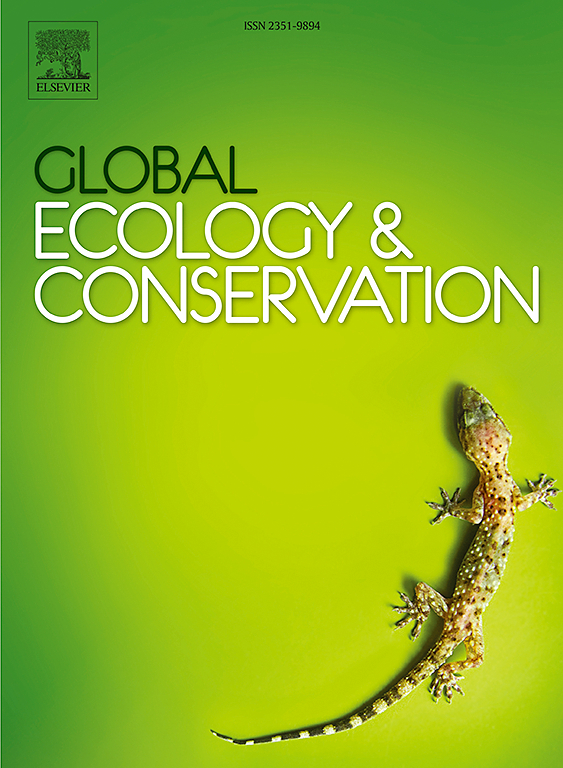Modelling and mapping the abundance of lingonberry (Vaccinium vitis-idaea L.) in Norway
IF 3.5
2区 环境科学与生态学
Q1 BIODIVERSITY CONSERVATION
引用次数: 0
Abstract
Lingonberry ( L.) grows in a range of nature types in the boreal zone, and understanding factors affecting the abundance of the plant, as well as mapping its spatial distribution, is important. The abundance of the species can be an indicator of ecosystem changes, and lingonberry can also be a source for commercial utilisation of berry resources. Using country-wide data from 6404 field plots of the Norwegian national forest inventory (NFI), we modelled the relationship between lingonberry cover and airborne laser scanning (ALS) and satellite metrics and bioclimatic variables describing the forest structure, terrain, soil properties and climate using a generalised mixed-effects model with a quasipoisson distribution. The validation carried out with an independent set of 2124 NFI plots indicated no obvious bias in predictions. The most important predictors were found to be interactions between dominant tree species, stand basal area and latitude, as well as the reflectance in the near-infrared band from Sentinel-2 satellite imagery, the dominant height based on the ALS variable and the long-term mean summer (June–August) temperature. The results provide an indicator of the effects of global warming, as well as the possibility of giving forest management prescriptions that favour lingonberry and locating the most abundant lingonberry sites in Norwegian forests.挪威越橘(Vaccinium vitis-idaea L.)丰度建模与绘图
越橘(L. )生长在北方地区的一系列自然类型中,因此了解影响该植物丰度的因素以及绘制其空间分布图非常重要。该物种的丰度可以作为生态系统变化的指标,越橘也可以作为浆果资源商业利用的来源。我们利用挪威国家森林资源清查(NFI)的6404块实地地块的全国性数据,采用类泊松分布的广义混合效应模型,模拟了越橘覆盖率与机载激光扫描(ALS)和卫星测量指标以及描述森林结构、地形、土壤特性和气候的生物气候变量之间的关系。利用独立的 2124 块 NFI 地块进行的验证表明,预测结果没有明显偏差。研究发现,最重要的预测因素是优势树种、林分基部面积和纬度之间的相互作用,以及哨兵-2 卫星图像的近红外波段反射率、基于 ALS 变量的优势高度和夏季(6 月至 8 月)长期平均温度。研究结果为全球变暖的影响提供了一个指标,也为制定有利于越橘生长的森林管理规定和确定挪威森林中越橘最丰富的地点提供了可能性。
本文章由计算机程序翻译,如有差异,请以英文原文为准。
求助全文
约1分钟内获得全文
求助全文
来源期刊

Global Ecology and Conservation
Agricultural and Biological Sciences-Ecology, Evolution, Behavior and Systematics
CiteScore
8.10
自引率
5.00%
发文量
346
审稿时长
83 days
期刊介绍:
Global Ecology and Conservation is a peer-reviewed, open-access journal covering all sub-disciplines of ecological and conservation science: from theory to practice, from molecules to ecosystems, from regional to global. The fields covered include: organismal, population, community, and ecosystem ecology; physiological, evolutionary, and behavioral ecology; and conservation science.
 求助内容:
求助内容: 应助结果提醒方式:
应助结果提醒方式:


